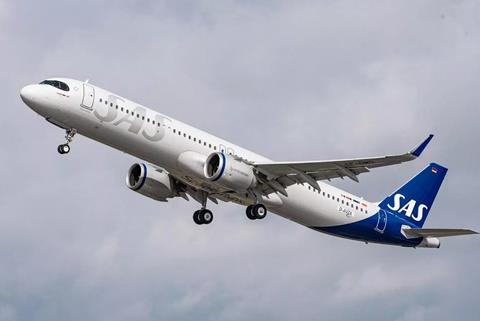SAS is looking to cut back on the number of wet-lease agreements it has entered, in order to simplify its operation as it emerges from US Chapter 11 protection.
The airline’s full-year financials show that wet-lease expenditure increased substantially, to SKr2.6 billion ($250 million), compared with pre-crisis figures of around SKr1.4 billion.
SAS normally wet-leases capacity for its regional operations, which use Bombardier CRJs and ATR turboprops.
But it states that it had eight Airbus A320-family jets on wet-lease at the end of the full year in October, and it was also using a Hi Fly Airbus A330 for long-haul operations.
“This year we had up to six different wet-lease providers,” said chief executive Anko van der Werff, speaking during a full-year briefing on 30 November. “That we’ll significantly reduce for next summer.”
He says the carrier intends to cut the number of providers to “only one or two”, pointing out that the situation results in operational complexity – not only arising from different suppliers but also the use of various aircraft types.
“We knew it would happen but we still had to it,” he says. “We needed those wet-leases.”

But he says that next year will be “very much clearer” and that, to the “largest extent”, SAS will deploy its own capacity.
Van der Werff states that the long-haul provider “will be gone” and that the airline “does not intend” to have Airbus single-aisle wet-lease partners either.
SAS is still looking at potential replacement aircraft in the mid-size sector, but this is not a priority, he adds.
It still has aircraft on order and plans to take delivery of 13 aircraft – a dozen A320neos plus an Embraer 195 for its SAS Link arm – in fiscal 2023-24, as well as six more A320neos and two A350-900s the following year.
Chief financial officer Erno Hilden, speaking at the briefing, added that the airline has “good flexibility” to increase the fleet size up or down to meet traffic demand, with the ability to extend or remove older A320s.


























